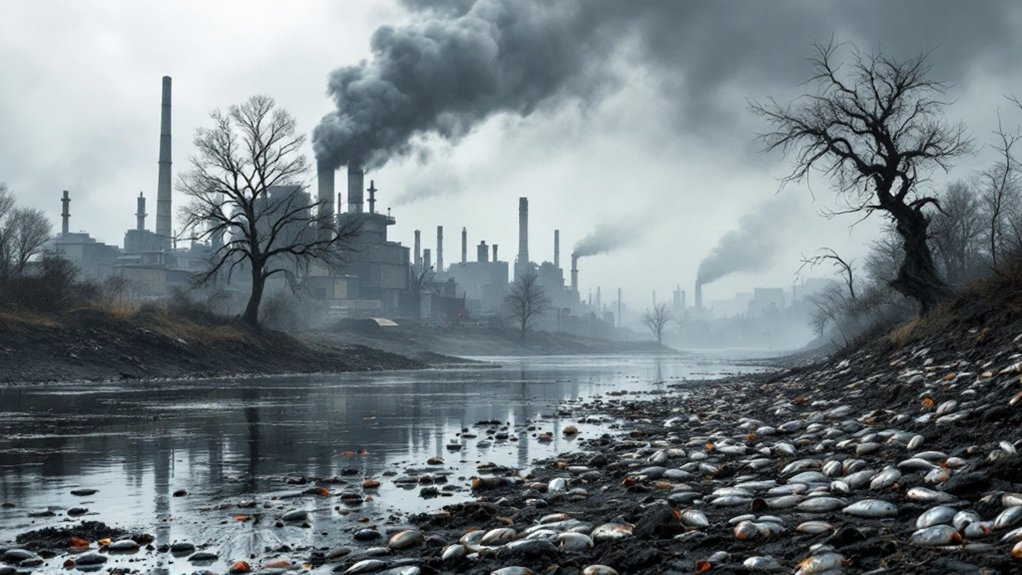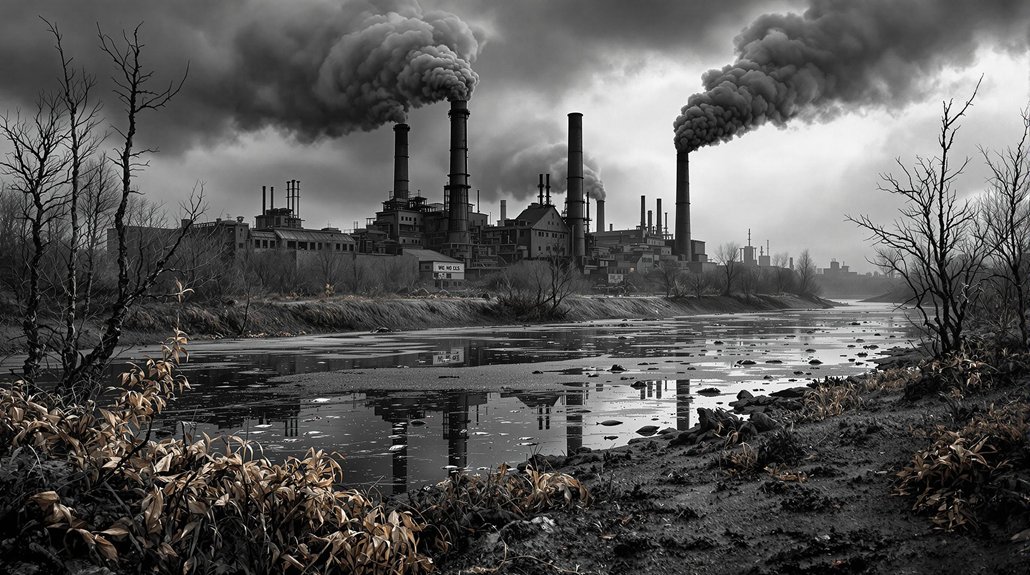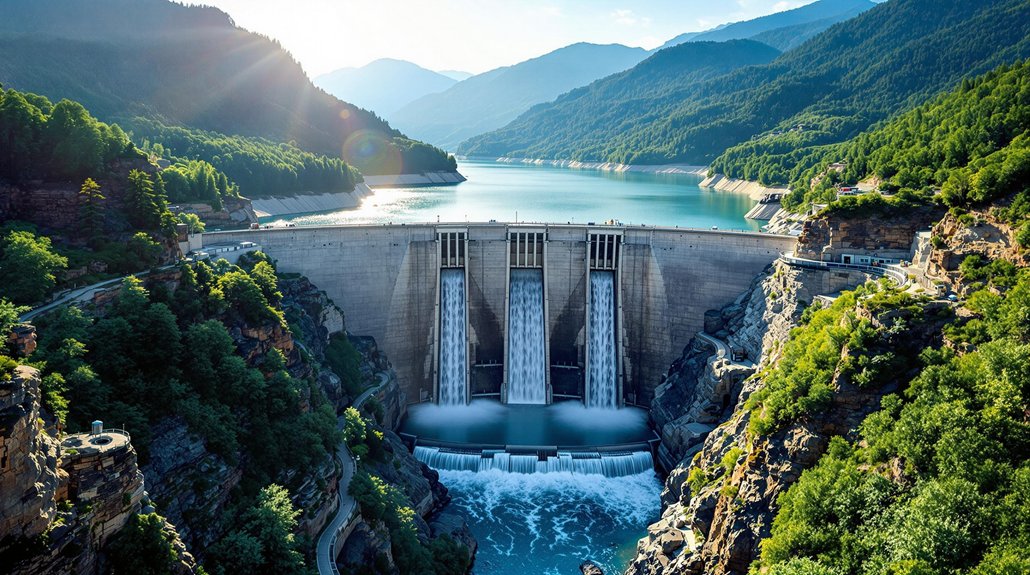The Industrial Revolution brought economic growth but devastated nature. Factories spewed thick smoke into the air, causing respiratory diseases. Rivers became toxic dumping grounds, killing aquatic life. The Cuyahoga River even caught fire multiple times due to pollution. Massive deforestation destroyed habitats and eliminated carbon sinks. These environmental consequences created a dark legacy that continues to impact our world today. The full environmental cost reveals a sobering historical lesson.

While the Industrial Revolution brought unprecedented economic growth and technological advances, it also released devastating consequences for the natural world.
Beginning in the 18th century, factories began burning coal at massive rates, filling the air with thick smoke and harmful particles. Rivers became dumping grounds for industrial waste, poisoning aquatic life and drinking water sources.
The Industrial Revolution’s dark legacy: skies choked with coal smoke while rivers became toxic graveyards for industrial refuse.
The environment has suffered greatly from these changes. Air pollution levels skyrocketed as coal-burning factories multiplied across Europe and North America. The Cuyahoga River became so polluted with industrial waste that it actually caught fire several times between 1912 and 1969. The rapid expansion of factories and urban centers led to massive deforestation, clearing essential carbon sinks that would have otherwise mitigated greenhouse gas buildup.
Smog became a common sight in cities like London and Manchester, causing respiratory diseases among urban residents. Water bodies near
Frequently Asked Questions
How Did Indigenous Communities Respond to Industrial Environmental Changes?
Indigenous communities responded to environmental changes through multiple approaches. They maintained traditional practices while adapting to new challenges.
Many organized protests and formed alliances to oppose harmful developments. They created monitoring programs combining traditional knowledge with science.
Communities pursued legal action to protect treaty rights and advocate for stricter regulations. They’ve worked to regain control of ancestral lands while preserving ecological wisdom for future generations.
Which Countries Resisted Industrialization to Protect Natural Environments?
Several countries have actively resisted industrial development to protect their environments. Bhutan prioritized “Gross National Happiness” over industrialization.
Costa Rica invested heavily in renewable energy and forest conservation.
Palau banned commercial fishing to safeguard marine ecosystems.
Gabon established national parks covering 11% of its land.
Botswana focused on eco-tourism rather than heavy industry.
These nations chose environmental protection over conventional industrial growth.
What Role Did Women Play in Early Environmental Movements?
Women played essential roles in early environmental movements. They founded bird protection societies in the late 1800s and fought against the feather trade in hat-making.
Many established wildlife refuges, organized grassroots efforts to clean polluted areas, and mobilized women’s clubs for conservation projects. They wrote influential books, conducted scientific research, and lobbied for environmental laws.
Their activism often connected to their push for voting rights.
How Did Industrial Pollution Impact Global Weather Patterns?
Industrial pollution has dramatically altered global weather patterns. Greenhouse gases from factories and vehicles have raised Earth’s temperature by 1.1°C since 1880.
This warming has changed rainfall patterns, making storms more intense in some areas while expanding dry zones in others. Ocean currents like the Gulf Stream are weakening, and jet stream patterns have shifted.
These changes have increased extreme weather events worldwide.
Were There Successful Pre-1900 Environmental Restoration Projects?
Several pre-1900 environmental restoration projects succeeded in the United States.
Tree planting campaigns in prairie states helped fight soil erosion starting in the 1870s. The Timber Culture Act of 1873 boosted reforestation on homestead claims. Early forest reserves protected watersheds damaged by logging.
Urban areas saw improvements through new sewer systems and street cleaning programs.
Wildlife refuges, like Pelican Island in 1903, helped protect endangered bird species from extinction.









